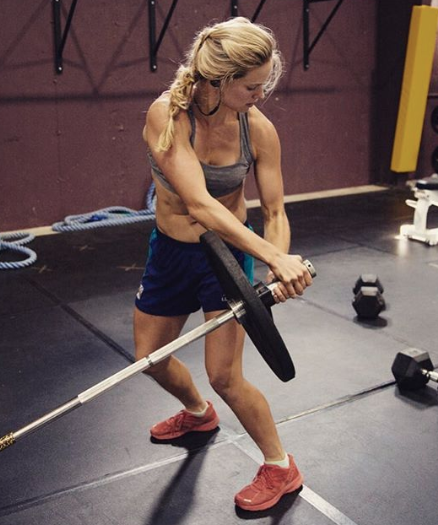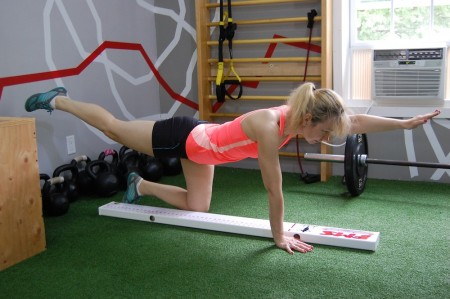
Cross country ski trails—and the grooming strategies that prepare those trails for race events—have changed dramatically in recent seasons, especially since artificial snow became commonplace at Nordic venues. Commensurately, skiing speeds have increased, and so has the reliance on upper body power for propulsion. This has been most visible in classic skiing where technique zones are put in place down to the junior level to ensure that striding remains part of the sport. These changes in course preparation have led to skiers relying on power in the double pole over efficiency in striding. The resulting increase in speed is what many skiers are seeking; often, they incorporate strength training in search of that extra bit of speed.
“Strength training” is a term that I don’t love as a coach and physiologist. I use the term, myself, but it is vague and hard to define. According to Oxford Languages (via Google), “strength” is the quality or state of being physically strong (the ability to move/lift a weight, or resist a force). When skiers think of what is often termed “strength training,” we usually imagine some form of resistance training designed to augment and improve our aerobic and anaerobic performances. The question that should be of interest to skiers, then, is what sort of strength/resistance training is most likely to benefit our skiing?

Resistance training—the term that better describes these workouts—is often thought of (by skiers) as time in the weight room or circuits in the park. These workouts can affect a variety of changes in one’s physiology. They can increase muscle mass through hypertrophy, increase load on bones, and strengthen connective tissue. Neuromuscular developments can also happen that allow the skier to recruit more motor units and—in doing so—recruit more muscle to that movement.
These changes can have a variety of impacts on a cross country skier. More strength often translates into more power that can be put into the pole or ski, generating more speed. These changes also help protect the body from injury by increasing muscle mass resulting in better protection of the joints. Most often the focus of any training is on increasing ski speed. Recruiting more motor units is one of the main emphases of such training. By using motions similar to skiing, an athlete can transfer these newly strengthened pathways into their skiing motions. An example of this is the squat, the loading of the leg is very similar to the kick in either skating or classic skiing.
“Strength is fundamental to maximizing ski performance,” remarked Team Birkie Head Coach, Chad Salmela. “In a similarly-perceived sport like distance running, one might be able to progress quite a lot simply by running more. Performance in skiing, by comparison, requires a trained core and general strength accumulation to practice the fundamentals of the ski techniques, and then needs specific development beyond that. So, from the very basics, training to ski faster fundamentally requires fairly advanced muscular strength, whether organized into a weight lifting or gym routine, or simply growing up that way…I think periodizing strength development in the off-season, and strength maintenance during the racing season, especially for higher level athletes, is a pretty big part of performance coaching for skiers. There are a lot of effective ways to build and maintain muscular strength. How that fits into developing other critical training priorities is one of the primary foundations of good coaching.”

When incorporating strength training into one’s workout schedules, there are a variety of options. One is to create dedicated spaces and times for strength training. This is the routine typically employed by those who have access to these spaces. Another option is using body weight and/or creative solutions (like backpacks filled with rocks) to create resistance training in a park or back yard. With minimal equipment, skiers can achieve many of the same effects as those found in a weight room. Combining strength work with an endurance/interval factor (as in a timed circuit) is a nice way to develop general fitness, but the key to developing greater strength is to isolate those strength movements, and perform them when not under aerobic stress. In other words, there is no exercise or workout that is the solution for everything. With either of these strength training strategies, I like to design workouts focusing on three upper body exercises, three lower body exercise and three core exercises per training session. When choosing exercises, focus on those that incorporate multiple joints. This engages more muscles and lessens the number of movements needed to get a full body workout. One major difference that most endurance athletes employ in their strength training is training the whole body every time they do a resistance training session. Many weightlifters and body builders will alternate leg days and arm days to make daily resistance training more effective. Since resistance training for cross country skiers is often done 2-3x a week (with a day or more of rest in between sessions) it is effective to train the whole body each session.
When discussed by endurance athletes, resistance training is often thought of with the single goal of “getting stronger.” When executed well, it can achieve a variety of outcomes depending on how it’s implemented. This training can be used to achieve four outcomes:
- Increased power
- Strength
- Hypertrophy
- Muscular endurance.
To affect these outcomes, it’s helpful to know ones one rep max (the maximum amount of resistance you can lift in a single repetition for that exercise).
In order to clearly understand our two workout examples (see below), it’s important to consider what a few of those terms mean:
SETS: the number of times you go through that exercise’s repetitions.
REPETITIONS: the number of times you move your body or the weight, while MAX indicates that you can’t accomplish even one more repetition. If the plan prescribes 12RM this means that you should select a weight heavy enough that you can’t accomplish the 13th repetition. If you can do more than the proscribed number of repetitions, then add weight for the next set.
STRENGTH: Load greater than 85 %1RM, repetitions, less than or equal to six.
POWER: loads of 80% 1RM, repetitions of two to five with multiple sets.
HYPERTROPHY: Loads of 67-85% 1RM/ 6-12 repetitions.
MUSCULAR ENDURANCE: loads less than or equal to 67 %1RM and greater than 12 repetitions.
Source: Haff, G., and Triplett, N. (2016). Essentials of Strength and Conditioning (4th ed.). National Strength and Conditioning Association
The different set schemes for strength, power, hypertrophy and muscular endurance lead to some outcomes that are desirable for endurance athlete and some that are not desirable. Notably the hypertrophy set schemes are often avoided to limit the increases in mass that one has to carry on the ski trail. Exceptions to this are moving through it to condition someone to be able to use the power loads. Often training will periodize muscular endurance blocks and power blocks to compliment the other training goals throughout the year. Other priorities for cross country skiers include stability while gliding on one ski. Professional skiers often post on social media impressive pictures or videos that illustrate this prowess. As a developing skier becomes more proficient at many of the strength exercises, adding a balance component can be beneficial to their skiing. One example of this would be to stand on a Bosu ball while doing medicine ball throw downs or adding the Bosu ball to the body weight squats.
There are good examples of these exercises on YouTube as well as in this guide.
Sample Weight Room Workout
3 sets, 14 RM, 2 minute between sets, 3 minutes between sets.
Lat Pull Down
Squats or Leg Press
Dips
Lunges
Seated Row
Single Leg Romanian Deadlift
Front Plank
Dead Bug
Bird Dogs
Sample Circuit Strength Workout
3 rounds, 30-40 seconds on, 30-20 seconds off, 5 minute rest between rounds.
Push Ups
Lunges
Crunches
Chair Dips
Body Weight squats
High Plank with Shoulder Tap
Medicine Ball Throw Downs
Step ups or Box Jumps (picnic table bench or stair)
Bird Dogs
Jason Kask
Head ski coach at the College of St. Scholastica and owner and operator of Superior Performance, Jason Kask is a coach certified through United States Ski and Snowboard, and a Certified Strength and Conditioning Specialist (CSCS).



